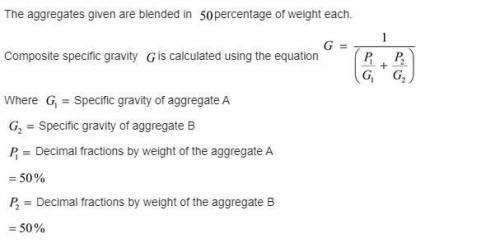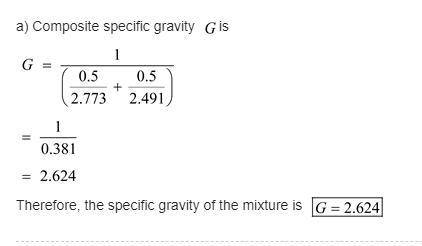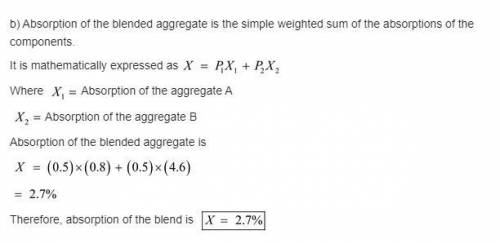
Engineering, 15.04.2020 23:32, magics
Laboratory specific gravity and absorption tests are run on two coarse aggregate sizes, which have to blended.
The results are as follows:
Aggregate A: Bulk specific gravity 2.491; absorption 0.8%
Aggregate B: Bulk specific gravity 2.773. absorption 4.6%
a. What is the specific gravity of a mixture of 50% aggregate A and 50% aggregate B by weight?
b. What is the absorption of the mixture?
c. What should be the proportion of aggregate A in the blend, so that the mixture will have a bulk specific gravity of 2.650?
d. What should be the proportion of aggregate A in the blend, so that the mixture will have an absorption capacity of 4%?

Answers: 2
Other questions on the subject: Engineering

Engineering, 04.07.2019 18:10, hadellolo8839
Acompressor receives the shaft work to decrease the pressure of the fluid. a)- true b)- false
Answers: 3

Engineering, 04.07.2019 18:20, alexis9263
Have a greater impact on maintenance productivity than any other support group. (clo5) a)-the top management b)-inventory and purchasing c)-sub-contracting d)-cmms
Answers: 2

Engineering, 04.07.2019 18:20, karatsgrande3772
Determine the damped natural frequencies and the steady state response of a decoupled damped forced two degrees of freedom system. 10ä1 + 2q1 20q1 10 cos t; 10q2 +4q2 + 40q2 10 cos t
Answers: 3

Engineering, 04.07.2019 18:20, moneywaydaedae
Air is compressed isentropically from an initial state of 300 k and 101 kpa to a final temperature of 1000 k. determine the final pressure using the following approaches: (a) approximate analysis (using properties at the average temperature) (b) exact analysis
Answers: 1
Do you know the correct answer?
Laboratory specific gravity and absorption tests are run on two coarse aggregate sizes, which have t...
Questions in other subjects:

Mathematics, 24.09.2019 22:30

Physics, 24.09.2019 22:30
















